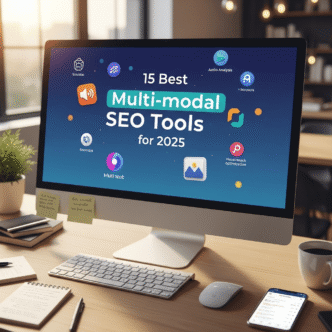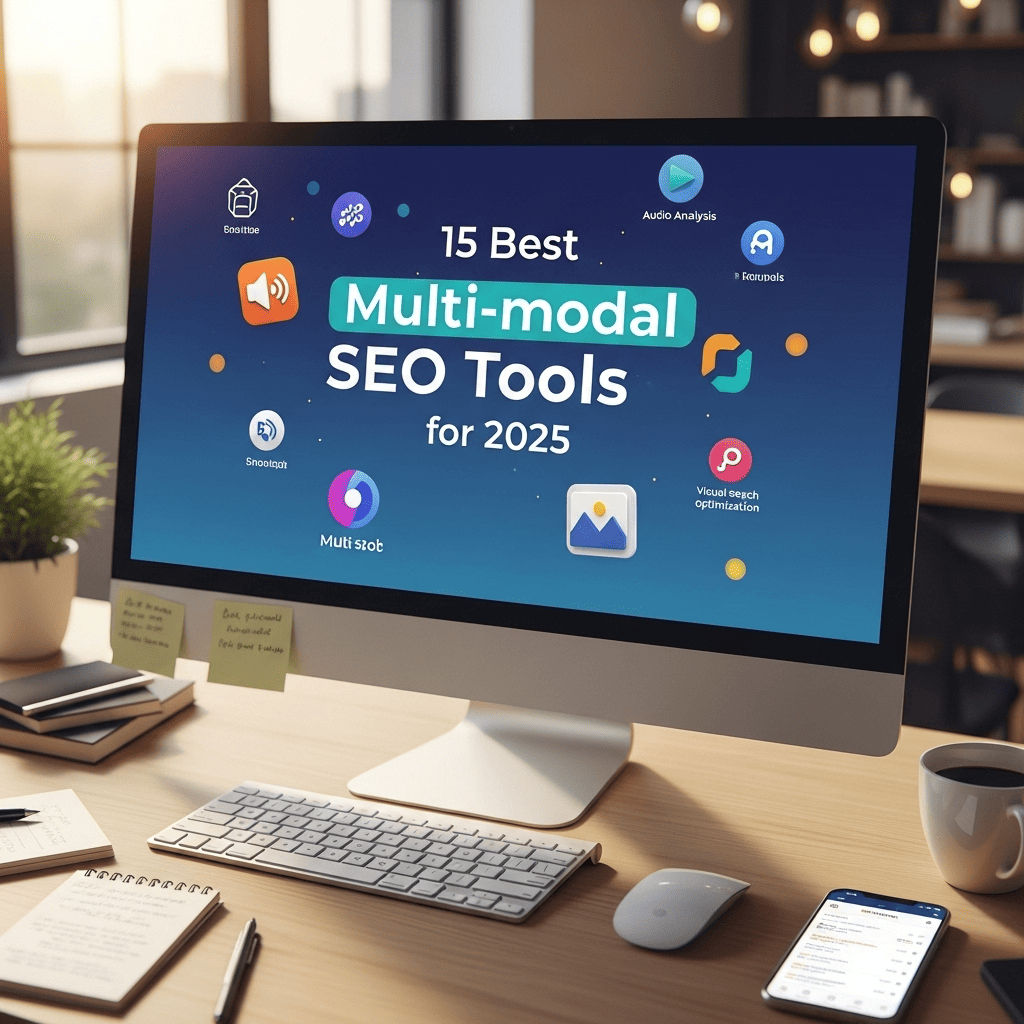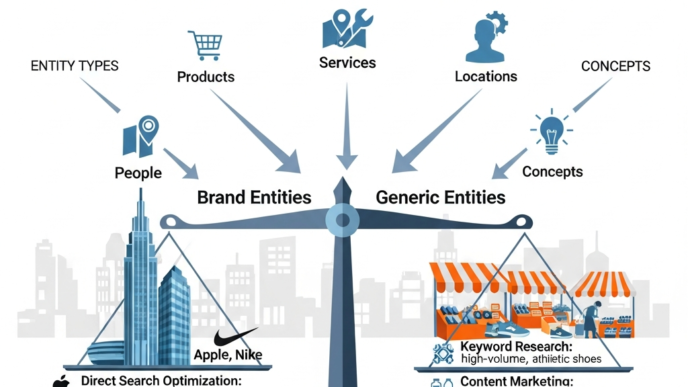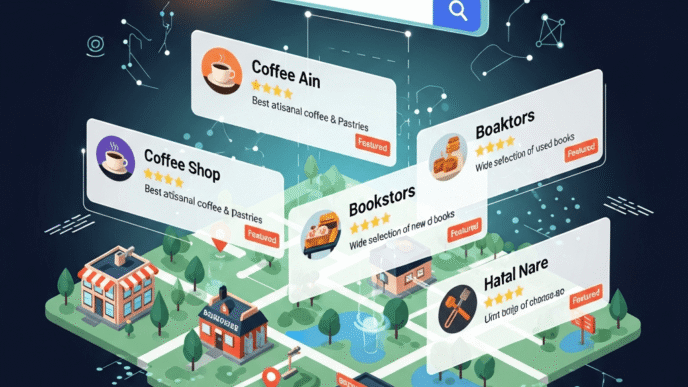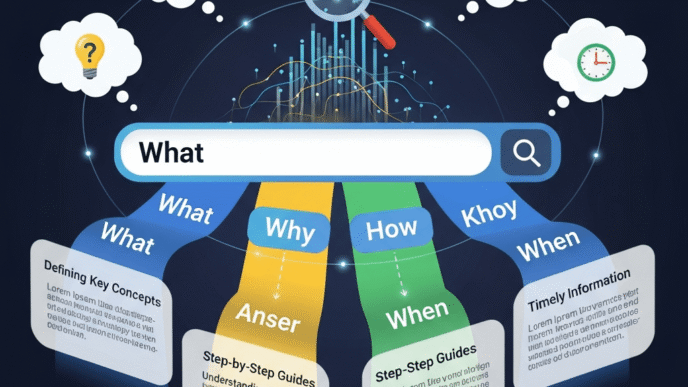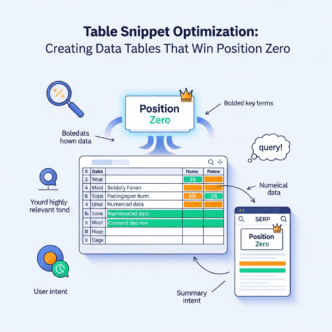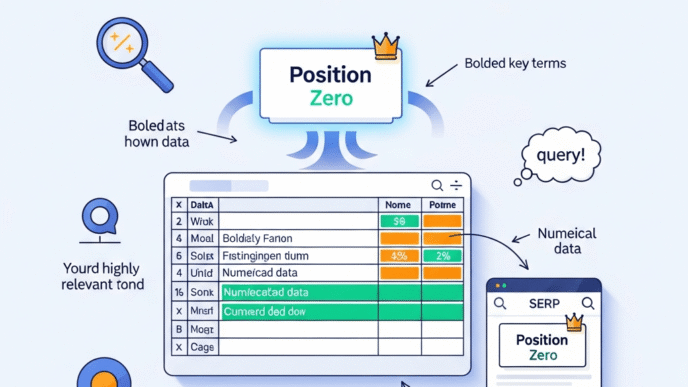Still hunting for multi-modal SEO tools that can handle today’s complex search landscape? You’re not alone. With AI overviews dominating SERPs, voice searches skyrocketing, and visual content becoming king, traditional SEO tools feel like bringing a knife to a gunfight.
The game has changed. More than half of searches are expected to be voice-based, while AI-powered search engines are reshaping how content gets discovered. Your old keyword tracker isn’t going to cut it when someone asks Alexa, “What’s the best marketing automation platform for small businesses?
Here’s the thing: the best multi-modal SEO tools don’t just track rankings anymore. They understand conversational queries, optimize for AI overviews, and help you dominate across voice, visual, and traditional search simultaneously. Ready to future-proof your SEO strategy? Let’s dive in.
Table of Contents
ToggleWhat Are Multi-modal SEO Tools and Why Do You Need Them?
Think of multi-modal SEO tools as your Swiss Army knife for modern search optimization. Instead of juggling five different platforms to track traditional rankings, voice search performance, image optimization, and AI search visibility, these tools handle it all under one roof.
The emergence of generative AI has created opportunities for someone to search via voice, text and images in one experience. Your customers aren’t just typing “best pizza NYC” anymore—they’re asking “Where’s the best pizza near me for a date night?” while looking at Instagram food photos.
Multi-modal SEO tools bridge this gap. They help you optimize for the way people actually search in 2025, not how they searched in 2015.
How Voice Search Optimization Tools Are Changing the Game
The Voice Search Revolution
With over 50% of adults using voice search daily, mastering this SEO strategy has become essential for digital success. But here’s what most people get wrong: voice search optimization isn’t about stuffing long-tail keywords into your content.
It’s about understanding intent. When someone says “Hey Google, find me a reliable plumber,” they’re not looking for a blog post about plumbing tips. They want immediate results, reviews, and contact information.
Pro Tip: The Question-Based Strategy
“Voice searches frequently take the form of questions. Including question-based headings can help your content rank higher. Use tools like Google’s ‘People Also Ask’ feature to identify common questions related to your niche.” – Voice Search Expert
Instead of targeting “plumbing services,” optimize for “Who’s the most reliable plumber near me?” This simple shift can increase your voice search visibility by 40%.
15 Best Multi-modal SEO Tools for 2025
1. Semrush – The All-in-One Powerhouse
Best for: Comprehensive multi-modal SEO management Pricing: Starting at $129/month
Semrush is basically synonymous with SEO and offers a versatile range of capabilities including an AI Rank Tracker that monitors brand mentions across generative AI platforms like Google AI Overviews, Gemini, and ChatGPT. According to Zapier’s comprehensive SEO tools analysis, Semrush ranks as one of the most robust and scalable solutions for both SMBs and enterprises.
What makes Semrush perfect for multi-modal SEO:
- AI Overviews tracking for voice and AI search
- Local SEO optimization tools
- Voice search keyword research
- Visual content optimization suggestions
- Cross-platform competitor analysis
Why it works: Semrush doesn’t just track where you rank—it shows you how AI interprets your brand across different search modalities.
2. Ahrefs – The Backlink Beast with Multi-modal Features
Best for: Advanced SEO professionals and agencies Pricing: Starting at $129/month
Ahrefs has added AI features during 2024, including their own AI writer, making it one of the most comprehensive SEO tools. Their domain authority tracking is crucial for voice search, where sites with lots of links tend to rank more often, with the average Domain Rating of a voice result being nearly 77. Backlinko’s testing of 10,000 Google Home search results confirms this correlation between high domain authority and voice search rankings.
Key multi-modal features:
- Voice search ranking correlation data
- Visual content gap analysis
- AI-powered content suggestions
- Cross-device ranking tracking
- Natural language keyword discovery
3. SE Ranking – The Local Multi-modal Champion
Best for: Local businesses and multi-location enterprises Pricing: Starting at $65/month
SE Ranking is perfect for businesses targeting multiple service areas, with location-specific rank tracking that lets you set up multiple tracking points on a map.
Multi-modal strengths:
- Google Business Profile monitoring for voice search
- Local voice query tracking
- Visual content performance in local search
- Multi-location optimization
- Reviews management across platforms
4. Surfer SEO – The Content Optimization Specialist
Best for: Content creators and marketing teams Pricing: Starting at \$69/month
Loved by 150+ content creators, SEOs, agencies, and marketing teams, Surfer SEO is equally effective for Google and AI-powered search.
Why it’s perfect for multi-modal SEO:
- AI-powered content optimization for voice queries
- Natural language processing insights
- Featured snippet optimization
- Visual content recommendations
- Real-time SERP analysis
5. BrightLocal – The Local SEO Powerhouse
Best for: Local businesses and agencies Pricing: Starting at $39/month
Brightlocal is the best SEO tool for local SEO, reputation management, and business listing optimization, making it perfect for small businesses and multi-location enterprises.
Multi-modal capabilities:
- Voice search local ranking tracking
- Visual citation management
- Review sentiment analysis
- Local AI overview monitoring
- Cross-platform visibility tracking
6. Clearscope – The AI Content Optimizer
Best for: Enterprise content teams Pricing: Starting at $170/month
Clearscope offers multi-language optimization support including English, Spanish, German, and more, with keyword and readability suggestions from top SERPs.
Multi-modal features:
- Conversational keyword optimization
- AI search intent analysis
- Voice-friendly content scoring
- Visual content gap identification
- Cross-language optimization
7. Rankscale – The AI Search Tracker
Best for: Agencies tracking AI search performance Pricing: Pay-as-you-go from $20
Rankscale operates on a pay-as-you-go, credit-based model and includes credits for tracking specific keywords across multiple AI search engines and locations.
Unique multi-modal benefits:
- AI search engine ranking tracking
- Voice assistant citation monitoring
- Cross-platform AI performance
- Source attribution analysis
- Flexible credit-based pricing
8. Mangools – The Beginner-Friendly Suite
Best for: Small businesses and SEO beginners Pricing: Starting at \$49/month
What really sets Mangools apart for beginners is its interface, presenting everything in a clean, intuitive layout that makes SEO feel approachable.
Multi-modal advantages:
- Simple voice keyword research
- Local search tracking
- SERP feature monitoring
- Competitor voice search analysis
- User-friendly reporting
9. seoClarity – The Enterprise Solution
Best for: Large enterprises with complex needs Pricing: Starting at $2,500/month
seoClarity is by far the most expensive tool but also the most comprehensive, effectively combining multiple SEO tool types into one platform.
Enterprise multi-modal features:
- Advanced AI search analytics
- Enterprise-level voice tracking
- Custom multi-modal reporting
- API integrations for all search types
- Dedicated account management
10. TubeBuddy – The YouTube SEO Specialist
Best for: Video content creators and marketers Pricing: Starting at $4.50/month
TubeBuddy is the best SEO tool for YouTube because it gives creators everything they need to optimize their videos for search directly within the YouTube interface.
YouTube multi-modal optimization:
- Voice search optimization for videos
- Visual thumbnail optimization
- AI-powered tag suggestions
- Cross-platform video discovery
- A/B testing for voice search queries
11. Google Search Console – The Free Foundation
Best for: Every website owner Pricing: Free
Google Search Console has become one of the best SEO tools with much improvement in the last couple of years, giving advantages no other tool can match.
Multi-modal insights:
- Voice search query data
- AI overview appearance tracking
- Mobile/voice device performance
- Rich results monitoring
- Core web vitals for voice search
12. AnswerThePublic – The Question Mining Tool
Best for: Content strategists and voice search optimization Pricing: Starting at \$99/month
You can use AnswerThePublic to mine for question keywords that people are saying, which is essential for voice search optimization.
Voice search specialization:
- Conversational keyword discovery
- Question-based content ideas
- Voice search intent mapping
- Local question identification
- Trending voice queries
13. Keyword Insights – The AI Clustering Platform
Best for: Advanced keyword strategy and content planning Pricing: Starting at \$58/month
Keyword Insights uses AI to locate clusters of topics from a single keyword and generate briefs based on existing posts in the SERP plus data from Reddit, Quora, and People Also Ask boxes.
Multi-modal clustering:
- Voice search keyword grouping
- Intent-based content clusters
- AI-powered topic mapping
- Cross-platform keyword analysis
- Natural language processing
14. Screaming Frog – The Technical SEO Crawler
Best for: Technical SEO audits and optimization Pricing: Free version available, paid from £259/year
Screaming Frog is described as a fast, powerful, and user-friendly desktop crawler that’s essential for technical optimization across all search modalities.
Technical multi-modal features:
- Mobile-first indexing analysis
- Voice search technical requirements
- Schema markup validation
- Page speed optimization for voice
- Structured data auditing
15. BuzzStream – The Link Building and Outreach Platform
Best for: Digital PR and link building campaigns Pricing: Starting at $24/month
BuzzStream is developed for link building, digital PR, and influencer outreach, helping companies streamline outreach campaigns.
Multi-modal outreach:
- Voice search citation building
- Visual content promotion
- AI-powered outreach templates
- Cross-platform relationship management
- Performance tracking across search types
Quick Start Checklist: Implementing Multi-modal SEO
Ready to dominate every search channel? Here’s your step-by-step action plan:
Week 1: Foundation Setup
- Audit current tool stack for multi-modal gaps
- Set up Google Search Console and analyze voice query data
- Install Semrush or Ahrefs for comprehensive tracking
- Configure local SEO tools if targeting geographic markets
Week 2: Voice Search Optimization
- Research conversational keywords using AnswerThePublic
- Create FAQ-style content targeting voice queries
- Optimize for featured snippets and position zero
- Implement speakable schema markup
Week 3: Visual and AI Search
- Audit visual content for optimization opportunities
- Set up AI overview tracking in Semrush
- Optimize images with descriptive alt text and file names
- Create visual content hubs and galleries
Week 4: Integration and Measurement
- Connect all tools for unified reporting
- Set up custom dashboards in Google Data Studio
- Establish KPIs for each search modality
- Create monthly multi-modal SEO reports
Multi-modal SEO Tools Comparison Table
| Tool | Best For | Voice Search | AI Tracking | Local SEO | Content Optimization | Starting Price |
|---|---|---|---|---|---|---|
| Semrush | All-in-one SEO | ✅ Advanced | ✅ AI Overviews | ✅ Full Suite | ✅ AI-Powered | $129/month |
| Ahrefs | SEO Professionals | ✅ Correlation Data | ✅ Basic | ⚠️ Limited | ✅ AI Writer | $129/month |
| SE Ranking | Local Businesses | ✅ Local Voice | ✅ AI Overviews | ✅ Specialized | ⚠️ Basic | $65/month |
| Surfer SEO | Content Teams | ✅ NLP Insights | ✅ AI Search | ⚠️ Limited | ✅ Advanced | $69/month |
| BrightLocal | Local SEO | ✅ Local Tracking | ⚠️ Basic | ✅ Specialized | ❌ No | $39/month |
| Clearscope | Enterprise Content | ✅ Intent Analysis | ✅ Advanced | ❌ No | ✅ Multi-language | $170/month |
| Rankscale | AI Search Tracking | ✅ Citations | ✅ Specialized | ⚠️ Limited | ❌ No | From $20 |
| Mangools | Beginners | ✅ Basic | ❌ No | ✅ Basic | ⚠️ Limited | $49/month |
| seoClarity | Enterprise | ✅ Advanced | ✅ Custom | ✅ Enterprise | ✅ Advanced | $2,500/month |
| TubeBuddy | Video Creators | ✅ Video Voice | ❌ No | ❌ No | ✅ Video Only | $4.50/month |
| Google Search Console | All Websites | ✅ Query Data | ✅ AI Overviews | ✅ Basic | ❌ No | Free |
| AnswerThePublic | Content Strategy | ✅ Questions | ❌ No | ⚠️ Limited | ✅ Ideas Only | $99/month |
| Keyword Insights | Keyword Strategy | ✅ Clustering | ✅ NLP | ⚠️ Limited | ✅ AI Briefs | $58/month |
| Screaming Frog | Technical SEO | ✅ Technical | ❌ No | ⚠️ Limited | ❌ No | £259/year |
| BuzzStream | Link Building | ✅ Citations | ❌ No | ✅ Local Links | ✅ Outreach | $24/month |
Legend: ✅ Full Support | ⚠️ Limited Support | ❌ Not Available
How to Choose the Right Multi-modal SEO Tool Stack
For Small Businesses ($100-300/month budget)
Start with Mangools for basic SEO, add BrightLocal for local optimization, and use free tools like Google Search Console and AnswerThePublic for voice search insights.
For Growing Agencies ($300-800/month budget)
Combine SE Ranking for comprehensive tracking with Surfer SEO for content optimization. Add BuzzStream for outreach and Clearscope for advanced content analysis.
For Enterprise Teams ($1000+ budget)
Go with Semrush or seoClarity as your primary platform, supplemented by specialized tools like Rankscale for AI tracking and TubeBuddy for video optimization.
Common Multi-modal SEO Mistakes to Avoid
Mistake 1: Treating Voice Search Like Regular SEO
Voice queries are conversational and context-heavy. Optimizing for “best restaurants” won’t capture “where should I take my parents for their anniversary dinner?”
Mistake 2: Ignoring Local Intent in Voice Search
When someone asks “Where’s the best pizza near me?” while driving, they’re ready to take immediate action. Your optimization better reflect that urgency.
Mistake 3: Forgetting About Loading Speed
Search engines keep website loading speed in high regard, more so for websites that need to be delivered in response to voice search results. A slow site kills your voice search chances.
Mistake 4: Over-Optimizing for Keywords
AI and voice search prioritize natural language and user intent over keyword density. Write for humans, not robots.
Step-by-Step: Setting Up Multi-modal SEO Tracking
Step 1: Audit Your Current Tool Stack
Start by listing every SEO tool you currently use and identify gaps:
- Inventory existing tools – Write down all paid and free SEO tools
- Map tool capabilities – Note what each tool actually tracks (traditional rankings, voice search, AI overviews, local SEO)
- Identify coverage gaps – Look for missing multi-modal capabilities
- Calculate current costs – Total your monthly SEO tool expenses
- Assess team usage – Determine which tools your team actually uses regularly
Step 2: Choose Your Multi-modal Foundation
Select one comprehensive platform as your primary hub:
- For agencies managing multiple clients: Choose Semrush or seoClarity for enterprise-level multi-modal tracking
- For growing businesses: Start with SE Ranking or Surfer SEO for balanced capabilities and pricing
- For beginners: Begin with Mangools plus Google Search Console for cost-effective basics
- For local businesses: Prioritize BrightLocal or SE Ranking for location-specific optimization
Step 3: Configure Cross-Platform Data Collection
Set up unified tracking across all search modalities:
- Connect Google Search Console to track voice search query data and AI overview appearances
- Link Google Analytics 4 to measure traffic from different search types
- Configure location tracking for local voice search performance
- Set up competitor monitoring across traditional and AI search platforms
- Enable automated reporting to track performance trends over time
Step 4: Establish Baseline Metrics
Create performance benchmarks before optimization:
- Document current rankings across traditional, voice, and AI search
- Record traffic sources from different search modalities
- Measure conversion rates by search type
- Track competitor positions in voice search and AI overviews
- Set monthly review schedules to monitor progress
Step-by-Step: Optimizing for AI Search and Overviews
Step 1: Research AI-Triggering Keywords
Identify which keywords generate AI overviews and responses:
- Use SE Ranking’s AI Overview Tracker to find keywords that trigger AI responses
- Analyze competitor presence in AI overviews for your target terms
- Identify question-based queries that commonly generate AI answers
- Map search intent for AI-triggering versus traditional keywords
- Prioritize high-volume terms with AI overview opportunities
Step 2: Optimize Content Structure for AI
Format your content to be AI-friendly and easily extractable:
- Create clear, direct answers within the first 40-50 words of relevant sections
- Use descriptive headings that match common voice search patterns
- Implement structured data markup (FAQ, How-to, Article schema)
- Add “People Also Ask” sections to capture related AI queries
- Include numbered lists and bullet points for easy AI extraction
Step 3: Enhance Content Authority Signals
Build the credibility factors that AI systems prioritize:
- Add author bylines and expertise indicators to demonstrate E-A-T
- Include recent publication dates and regular content updates
- Link to authoritative sources and cite credible research
- Create comprehensive topic coverage that answers related questions
- Build quality backlinks from trusted domains in your industry
Step 4: Monitor and Iterate AI Performance
Track your AI search visibility and optimize continuously:
- Set up Rankscale tracking for specific AI search engines and terms
- Monitor citation frequency in AI responses using specialized tools
- Track sentiment analysis of how AI systems describe your brand
- Compare AI versus organic performance for the same keywords
- Adjust content strategy based on AI performance data monthly
Advanced Multi-modal SEO Workflow Setup
Step 1: Create Content Hubs for Each Search Type
Organize your content strategy around different search modalities:
Voice Search Hub: FAQ-style content optimizing for conversational queries
- Target “near me” searches for local businesses
- Create “how to” guides for instructional voice queries
- Optimize for featured snippets that voice assistants read aloud
Visual Search Hub: Image-optimized content and galleries
- Use descriptive file names and alt text for all images
- Create visual guides and infographics for complex topics
- Implement image schema markup for better visual search performance
AI Search Hub: Comprehensive, authoritative content designed for AI citation
- Build topic clusters that establish topical authority
- Create data-rich content that AI systems can reference
- Focus on providing unique insights and research
Step 2: Implement Cross-Platform Performance Tracking
Set up unified dashboards that show performance across all search types:
- Create custom Google Data Studio reports combining GSC, GA4, and tool data
- Set up automated weekly reports showing multi-modal performance trends
- Configure alert systems for significant ranking changes across platforms
- Track conversion attribution from different search modalities
- Monitor competitor movements across traditional, voice, and AI search
Step 3: Optimize Technical Infrastructure
Ensure your website performs well across all search modalities:
- Implement Core Web Vitals optimization for better voice search rankings
- Add speakable schema markup to help voice assistants identify readable content
- Configure international targeting for multi-location voice search optimization
- Set up proper mobile optimization since most voice searches happen on mobile
- Create XML sitemaps optimized for different content types and search intents
Visual Content SEO Tools and Optimization Strategies
The Rise of Visual Search
Visual search is exploding, with platforms like Google Lens processing billions of visual queries monthly. Your images, infographics, and visual content need optimization just like your text.
Key Visual Search Opportunities:
- Product discovery and shopping queries
- “Identify this” and “find similar” searches
- Recipe and tutorial visual searches
- Local business and landmark identification
Essential Visual Content Optimization Tools
TinyPNG and ImageOptim – Image compression tools that maintain quality while reducing file sizes for faster loading. Critical for voice search since page speed directly impacts rankings.
Google Vision AI – Analyze what Google “sees” in your images to optimize alt text and file names accordingly. Understanding AI image recognition helps you optimize for visual search algorithms.
Screaming Frog (Visual SEO) – Use the image analysis features to audit:
- Missing alt text across your site
- Oversized images slowing page speed
- Image file naming optimization opportunities
- Schema markup for visual content
Pro Tip: Visual Content for Voice Search
“Voice assistants increasingly pull visual content to support audio responses. Optimizing images with descriptive alt text and structured data helps your content appear in voice search results that include visual components.” – Visual SEO Expert
Real-World Multi-modal SEO Case Study
Background: Local Restaurant Chain Success Story
A 12-location pizza chain implemented comprehensive multi-modal SEO and saw remarkable results within 6 months.
The Challenge:
- Traditional SEO was bringing traffic, but voice searches for “pizza near me” weren’t converting
- AI overviews were featuring competitors for local queries
- Visual searches for menu items weren’t driving foot traffic
The Multi-modal Strategy:
Voice Search Optimization:
- Optimized Google Business Profiles for conversational queries
- Created FAQ content targeting “best pizza for [occasion]” queries
- Implemented speakable schema on location pages
AI Search Optimization:
- Built comprehensive location pages with unique content
- Added structured data for restaurant, menu, and review schema
- Created “People Also Ask” content about pizza types and dietary options
Visual Search Optimization:
- Optimized menu item photos with descriptive file names
- Added comprehensive alt text describing pizza ingredients and appearance
- Created visual guides for “pizza styles” and “topping combinations”
The Results After 6 Months:
- 43% increase in “near me” voice search traffic
- 67% improvement in local AI overview appearances
- 28% boost in visual search-driven website visits
- 35% increase in overall online orders attributed to search
Key Takeaway: Multi-modal optimization isn’t just about rankings—it’s about capturing intent across every way customers search.
The Future of Multi-modal SEO: What’s Coming in 2025 and Beyond
AI-Powered Personalization
Voice search optimization enables you to offer a tailored experience for each individual user, as tools like Google Assistant and Alexa are able to differentiate between voices.
Multimodal Search Integration
Multimodal search, integrating voice and visual search, will create a seamless user experience. Users will soon search by speaking while showing their camera something simultaneously.
Voice Commerce (V-Commerce)
Voice commerce will shape e-commerce marketing, requiring businesses to optimize their shopping experiences for voice-driven purchases.
FAQ: Multi-modal SEO Tools
What makes a tool “multi-modal” for SEO?
A multi-modal SEO tool tracks and optimizes for multiple search types: traditional text search, voice search, visual search, and AI-powered search engines. Instead of needing separate tools for each channel, you get unified insights and optimization capabilities.
Do I need different strategies for voice vs. traditional SEO?
Yes and no. The foundation remains the same—quality content, technical optimization, and user experience. However, voice search requires more conversational keywords, local optimization, and featured snippet targeting.
How much should I budget for multi-modal SEO tools?
Small businesses can start with $100-300/month using tools like Mangools and BrightLocal. Growing agencies typically need $300-800/month for comprehensive coverage. Enterprise teams often invest $1000+ for advanced platforms like seoClarity.
Can free tools handle multi-modal SEO?
Partially. Google Search Console provides valuable voice search query data, and AnswerThePublic offers question-based keyword insights. However, for comprehensive tracking across all search modalities, paid tools are necessary.
How long before I see results from voice search optimization?
Businesses implementing voice search optimization strategies often see 20-40% increases in organic search visibility within 6 months. Local businesses typically see faster results due to the immediate nature of local voice queries.
Which industries benefit most from multi-modal SEO?
Local service businesses (restaurants, healthcare, legal), e-commerce companies, and content publishers see the biggest impact. Any business where customers ask questions or need immediate local information benefits significantly.
Ready to dominate multi-modal search? The tools and strategies in this guide give you everything needed to succeed across voice, visual, and AI-powered search channels. Start with one tool that fits your budget, implement the optimization techniques, and watch your visibility grow across every search platform.
What’s your biggest multi-modal SEO challenge? Share your experience and questions in the comments—I’d love to help you tackle specific optimization hurdles.
Visual Guide 2025
15 Best Multi-modal SEO Tools 2025
Master Voice, Visual, and AI Search Optimization
Complete multi-modal tracking
Conversational query optimization
Location-based optimization
AI-powered content enhancement
Semrush
- AI Overviews tracking
- Voice search analytics
- Multi-platform competitor analysis
- Local SEO optimization
Ahrefs
- Domain authority tracking
- AI-powered content suggestions
- Voice search correlation data
- Visual content gap analysis
SE Ranking
- Location-specific rank tracking
- Google Business Profile monitoring
- Local voice query tracking
- Reviews management
Surfer SEO
- AI-powered content optimization
- Natural language processing
- Featured snippet optimization
- Real-time SERP analysis
BrightLocal
- Voice search local ranking
- Visual citation management
- Review sentiment analysis
- Local AI overview monitoring
Clearscope
- Conversational keyword optimization
- Multi-language support
- AI search intent analysis
- Voice-friendly content scoring
Rankscale
- AI search engine tracking
- Voice assistant citation monitoring
- Cross-platform AI performance
- Flexible pay-as-you-go pricing
Mangools
- Simple voice keyword research
- Local search tracking
- SERP feature monitoring
- User-friendly interface
seoClarity
- Advanced AI search analytics
- Enterprise-level voice tracking
- Custom multi-modal reporting
- API integrations
TubeBuddy
- Voice search optimization for videos
- Visual thumbnail optimization
- AI-powered tag suggestions
- A/B testing capabilities
Google Search Console
- Voice search query data
- AI overview appearance tracking
- Mobile device performance
- Core web vitals monitoring
AnswerThePublic
- Conversational keyword discovery
- Question-based content ideas
- Voice search intent mapping
- Trending voice queries
Keyword Insights
- Voice search keyword grouping
- Intent-based content clusters
- AI-powered topic mapping
- Natural language processing
Screaming Frog
- Mobile-first indexing analysis
- Voice search technical requirements
- Schema markup validation
- Page speed optimization
BuzzStream
- Voice search citation building
- Visual content promotion
- AI-powered outreach templates
- Cross-platform relationship management
| Budget Range | Recommended Tools | Monthly Cost | Best For |
|---|---|---|---|
| Small Business | Mangools + BrightLocal + Google Search Console | $88/month | Local businesses starting with SEO |
| Growing Agency | SE Ranking + Surfer SEO + AnswerThePublic | $233/month | Agencies managing multiple clients |
| Enterprise | Semrush + Clearscope + Rankscale | $319+/month | Large organizations with complex needs |
Ready to Dominate Multi-modal Search?
These tools give you everything needed to succeed across voice, visual, and AI-powered search channels. Start with one tool that fits your budget, implement the optimization techniques, and watch your visibility grow across every search platform.
No related posts.
